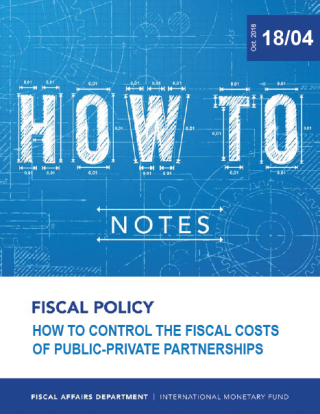Posted by Tim Irwin[1]
Around the world, public-private partnerships (PPPs) are being used to build and maintain roads, hospitals, power plants, and many other kinds of valuable infrastructure. At the same time, they create problems for public financial management (PFM) because they often involve government guarantees or long-term payment commitments, which aren’t easy to manage using the traditional tools of PFM. Some of the steps that ministries of finance can take to solve these problems are the subject of a recently published IMF “How To” note, which grew out of work commissioned by the late Mario Pessoa.
Some of the difficulties created by PPPs are related to the topics discussed in the October 2018 Fiscal Monitor, which highlights the value of looking at the government’s full balance sheet, not just its debt. In particular, if the asset side of the balance sheet is neglected, publicly financed investments always look like a fiscal problem, even when user fees mean that the investments may pay for themselves in the long run. PPPs can thus seem like a much better deal: the government gets what it wants without having to borrow, at worst assuming a contingent liability, which seems much better than assuming an outright liability. Considering the asset side of the government’s balance reveals the fallacy in this thinking. Publicly financed investments create assets that may be fiscally as well as socially valuable, while PPPs may allow the government to avoid a liability only because they also require it to give up an asset like the right to collect user fees.
None of this means that PPPs shouldn’t be used—just that good decisions about them require ministries of finance to think about both sides of the government’s balance sheet, along with the other issues discussed in the How-To note.
[1] Tim Irwin is a consultant and former staff member of the IMF’s Fiscal Affairs Department.
Note: The posts on the IMF PFM Blog should not be reported as representing the views of the IMF. The views expressed are those of the authors and do not necessarily represent those of the IMF or IMF policy.








